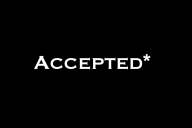You have /5 articles left.
Sign up for a free account or log in.
Recent events in Charlottesville, Va., and Shelbyville, Tenn., show us the modern face of American white supremacy. Rather than marching under sheets or lurking in the backwoods, today’s white supremacists stand proud in their tan khakis and white polos with tiki torches in hand. No longer are sheets needed to masks their faces as white men and women boldly shouted racist chants like “blood and soil.”
Instead, we see a disturbing trend emerging in larger society to label this speech and action as opinion-based ideology with no social, political or economic ramifications. While some people will look to the current U.S. president as the source of this normalization, his administration is not the only location to push “both sides” rhetoric. Instead, we can also look to colleges and universities as sites that help both disseminate and normalize racist hate speech.
Alt-right/white supremacist speakers and organizations are choosing to use and abuse colleges and universities as locations at which to speak and recruit. Speakers like Richard Spencer, Milo Yiannopoulos and Ann Coulter spew their hate-filled opinions from college lecture halls, relying on academic free speech as their alibi of legitimacy in these locations.
Colleges and universities that allow these speakers on their campuses say they are committed to upholding “free speech” rhetoric, no matter its consequences to the students, faculty and staff members who live and work in these places. “We welcome a diversity of opinions” tends to be a favorite tagline of places that invite these controversial speakers to come and set up shop, signaling a welcome to (and normalizing of) hate speech. Yet when those who are committed to antiracism, antioppression theory and practice -- such as Lisa Durden, Johnny Eric Williams or Tommy Curry -- use these same locations to push back against this toxic rhetoric, they are met with death threats, job loss and/or lack of support from those same institutions.
Why are colleges and universities prime and targeted sites for white supremacist speakers and their allies? Because it is in these locations where administrators saw diversity as a problem and not, as Christina Berchini says, “the symptom” of the ways white supremacy is embedded in the structure of higher education. Students across the country organized and began to protest and create sets of demands on the various ways they saw this inequity within their colleges and universities. In response, college administrators and boards of trustees have created “diversity and inclusion” strategic plans and initiatives to placate student demands. Many of those plans have not focused on structural changes but instead have relied on Band-Aid approaches that give just enough to student demands while never addressing the racist structural barriers that created the issues to begin with. In the process, many colleges and universities are now invoking “academic freedom” and “dialogue” as a way to “speak and hear” across difference in order to stop “divisive” rhetoric from taking hold.
Yet the implementation of such initiatives seems one-sided, and, instead of making space for students, faculty and staff members at the margins, they have ended up further marginalizing the demographic groups that demanded change in the first place. Instead of moving institutions forward, both diversity/inclusion initiatives alongside pleas to have more neutral stances inside and outside the classroom focus more on making majority students (namely, white students) comfortable at the expense of those who took the risk to protest injustice in the first place (usually black, brown, queer and trans students who sit at multiple intersections) because they sit in institutions that were not made for them. In this process, structures of oppression are never interrogated and instead everything is rendered “opinions” that can be “debated.” This process of deflection has helped normalize (and even welcome) hate speech on campuses, making them prime locations for white supremacists to target.
Many people call for an end to politics in the classroom, as this is seen as the source of the problem. Rather than address systemic and structural oppression and discrimination, faculty are being asked to take “neutral” stances and just teach our disciplines, leaving politics to social media and in-person conversation. Yet for many scholars, this is our work. Many of us are trained to see and then speak on institutional and structural systems of oppression. I have been trained specifically to see and call out institutional racism through an intersectional lens. If we are being told to just do our job, then we are. So the real question becomes, is society ready to accept the true point of an education, which is to develop a group of critically thinking, conscious citizens? Is higher education ready and capable of taking on this work?
That is the true point of education, what James Baldwin meant when he said in 1963, “The paradox of education is precisely this -- that as one begins to become conscious, one begins to examine the society in which he is being educated.” As educators, it is our job to teach students how to think critically so that they can engage with larger social issues. That is not confined to just the social sciences, but has an impact on all academic disciplines and departments. Yet as Baldwin also said, society is not always that anxious to have a mass of critically thinking and engaged people, because “what societies really, ideally, want is a citizenry which will simply obey the rules of society. If a society succeeds in this, that society is about to perish.” That is why education matters more so now than ever as a location that should be unapologetically committed to developing students to become true critically engaged thinkers who learn how to apply those knowledges, methodologies and skills to locations outside spaces like this.
It is on college and university campuses, and within our classrooms and through our programming, where resistance to this encroaching normalized white supremacist ideology must be challenged. Now is not the time to side with neutrality. In my office, we have taken up this challenge head-on through our programming and work with students. This academic year our #GetWoke series is focused on Organizing and Activism During 45. We created an open-source syllabus to accompany the panels we host around this theme, using both music and accessible reading pieces to guide and contextualize each of our panels.
Our goal is to have the campus and community understand what organizing and activism are, why individuals and groups participate in these practices, and what possibilities there are or can be when we engage in other ways of knowing and being. In doing so, we hope conversations and actions move away from partisanship and into understandings of what we want humanity to be. What humanity should be.




